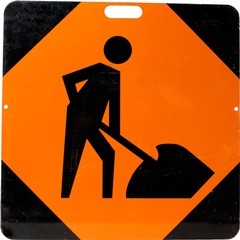 While Indiana’s unemployment dipped to 3.6% last month, Utah is a full half point lower. The New York Times recently cites some of the challenges that brings. A few excerpts:
While Indiana’s unemployment dipped to 3.6% last month, Utah is a full half point lower. The New York Times recently cites some of the challenges that brings. A few excerpts:
After eight years of steady growth, the main economic concern in Utah and a growing number of other states is no longer a lack of jobs, but a lack of workers. The unemployment rate here fell to 3.1%, among the lowest figures in the nation.
Nearly a third of the 388 metropolitan areas tracked by the Bureau of Labor Statistics have an unemployment rate below 4%, well below the level that economists consider “full employment,” the normal churn of people quitting to find new jobs. The rate in some cities, like Ames, Iowa, and Boulder, Colo., is even lower, at 2%.
That’s good news for workers, who are reaping wage increases and moving to better jobs after years of stagnating pay that, for many, was stuck at a low level. Daniel Edlund, a 21-year-old call center worker in Provo, Utah, learned on a Monday that his hours were changing. On Wednesday, he had his first interview for a new job.
But labor shortages are weighing on overall economic growth, slowing the pace of expansion in northern Utah and other fast-growing regions even as unemployment remains stubbornly high in Rust Belt cities like Cleveland and in regions still recovering from the 2008 recession, like inland California.
To Todd Bingham, the president of the Utah Manufacturers Association, “3.1 percent unemployment is fabulous unless you’re looking to hire people.”
“Our companies are saying, ‘We could grow faster, we could produce more product, if we had the workers,’” he said. “Is it holding the economy back? I think it definitely is.”
But the share of Utah adults who have withdrawn from the labor force remains higher than before the recession. Last year, 31.7% of adults in Utah were neither working nor looking for work, up from 28.2% in 2006. That is part of a broad national trend.

 Federal highway funding is running low. Nothing new there. The Indiana Chamber, and many others, have called for long-term solutions from Washington instead of short-term fixes that simply extend the uncertainty.
Federal highway funding is running low. Nothing new there. The Indiana Chamber, and many others, have called for long-term solutions from Washington instead of short-term fixes that simply extend the uncertainty. Combined television advertising spending in the presidential race is on pace to top $1 billion by Election Day. And while you might think you’re seeing more than a few attacks and the occasional "I have an idea" spot here in Hoosierland, we’re actually barely a blip on the radar screen.
Combined television advertising spending in the presidential race is on pace to top $1 billion by Election Day. And while you might think you’re seeing more than a few attacks and the occasional "I have an idea" spot here in Hoosierland, we’re actually barely a blip on the radar screen. Who doesn’t enjoy a good campaign commercial? With politicians lambasting their opponents, blaming them for the recession, mortgage failure, tax crisis, Midwest drought and McDonald’s taking away the McRib sandwich (okay, those last two are a bit facetious – obviously no one controls the weather), what’s not to love?
Who doesn’t enjoy a good campaign commercial? With politicians lambasting their opponents, blaming them for the recession, mortgage failure, tax crisis, Midwest drought and McDonald’s taking away the McRib sandwich (okay, those last two are a bit facetious – obviously no one controls the weather), what’s not to love? The Medicaid expansion decision for each state is one of several critical aspects of the Affordable Care Act, which was recently deemed Constitutional by the Supreme Court. Although federal dollars are at stake, it’s not a given that states (including Indiana) will agree to the changes to the program for low-income residents.
The Medicaid expansion decision for each state is one of several critical aspects of the Affordable Care Act, which was recently deemed Constitutional by the Supreme Court. Although federal dollars are at stake, it’s not a given that states (including Indiana) will agree to the changes to the program for low-income residents.  After his narrow Iowa victory, Mitt Romney appears to be the most likely choice to garner the GOP presidential nomination. However, due to the fact that many conservatives simply don’t like him, that’s far from a certainty. CNN has an
After his narrow Iowa victory, Mitt Romney appears to be the most likely choice to garner the GOP presidential nomination. However, due to the fact that many conservatives simply don’t like him, that’s far from a certainty. CNN has an  Back in September, there were reports of Will Ferrell running around Terre Haute.
Back in September, there were reports of Will Ferrell running around Terre Haute.